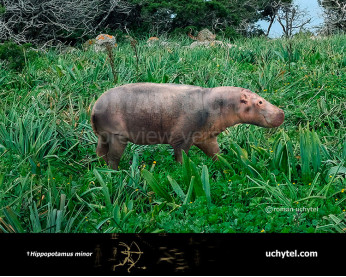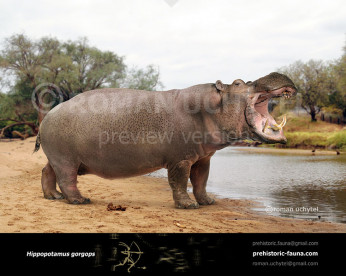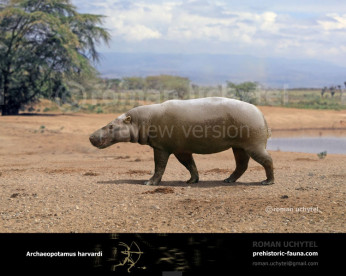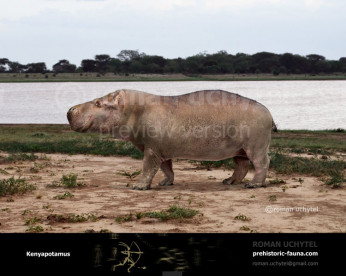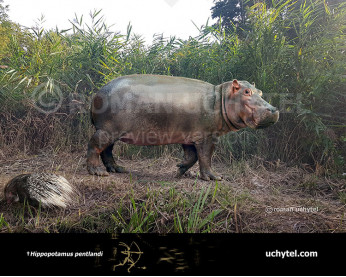Maltese dwarf hippopotamus
2025620256Maltese dwarf hippopotamus (†Hippopotamus melitensis (Major, 1902))
Order: Artiodactyla
Suborder: Whippomorpha
Family: Hippopotamidae
Time period: during the Middle-Late Pleistocene (Malta)
Size: 230 cm in length, 100 cm in height, 900 kg of weight
Hippopotamus melitensis is an extinct hippopotamus from Malta. It lived during Middle-Late Pleistocene. It probably descended from Hippopotamus pentlandi from Sicily, which in turn probably descended from the common hippopotamus (Hippopotamus amphibius). Like Hippopotamus pentlandi, Hippopotamus melitensis is substantially smaller than H. amphibius as a result of insular dwarfism, having an estimated mass of approximately 900 kg, which is smaller than the 1100 kg estimated for H. pentlandi. Unlike the common hippopotamus of Africa, the Maltese dwarf hippopotamus has limbs that are more adapted at a terrestrial locomotion in order to traverse more efficiently abrupt terrain, such as rocky outcrops and hills, in search of food. The diet of H. melitensis is suggested to have been more generalist than Hippopotamus amphibius (which is predominantly a grazer), likely as a result of limited resource diversity and lack of competition, as the only other large herbivore on the island was the dwarf elephant Palaeoloxodon mnaidriensis. The majority of findings of this species are from Għar Dalam, a cave on Malta famous for its Pleistocene fossil deposits. Fossils of H. melitensis, like those of the elephants, are absent from layers of Ghar Dalam younger than around 80,000 years old.
Maltese dwarf hippopotamus (†Hippopotamus melitensis (Major, 1902))
Order: Artiodactyla
Suborder: Whippomorpha
Family: Hippopotamidae
Time period: during the Middle-Late Pleistocene (Malta)
Size: 230 cm in length, 100 cm in height, 900 kg of weight
Hippopotamus melitensis is an extinct hippopotamus from Malta. It lived during Middle-Late Pleistocene. It probably descended from Hippopotamus pentlandi from Sicily, which in turn probably descended from the common hippopotamus (Hippopotamus amphibius). Like Hippopotamus pentlandi, Hippopotamus melitensis is substantially smaller than H. amphibius as a result of insular dwarfism, having an estimated mass of approximately 900 kg, which is smaller than the 1100 kg estimated for H. pentlandi. Unlike the common hippopotamus of Africa, the Maltese dwarf hippopotamus has limbs that are more adapted at a terrestrial locomotion in order to traverse more efficiently abrupt terrain, such as rocky outcrops and hills, in search of food. The diet of H. melitensis is suggested to have been more generalist than Hippopotamus amphibius (which is predominantly a grazer), likely as a result of limited resource diversity and lack of competition, as the only other large herbivore on the island was the dwarf elephant Palaeoloxodon mnaidriensis. The majority of findings of this species are from Għar Dalam, a cave on Malta famous for its Pleistocene fossil deposits. Fossils of H. melitensis, like those of the elephants, are absent from layers of Ghar Dalam younger than around 80,000 years old.


-797x638.jpg)
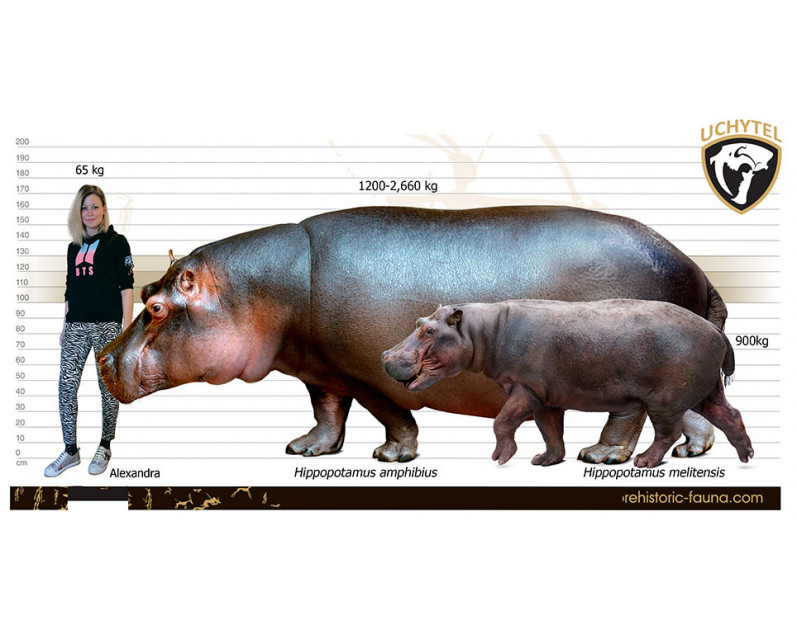

-70x56.jpg)

